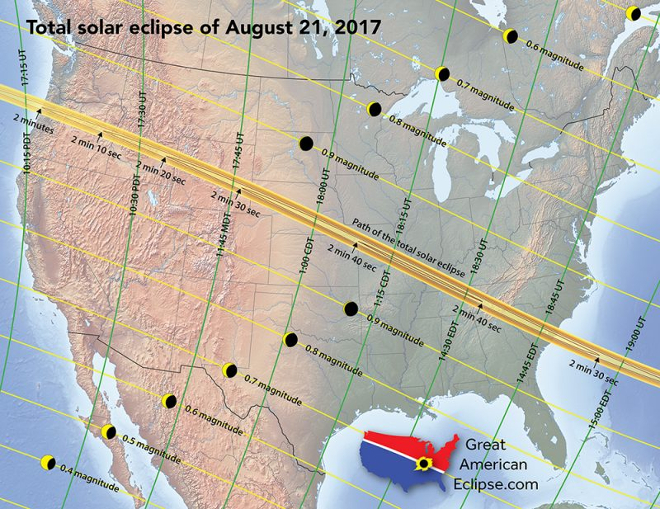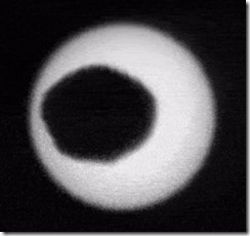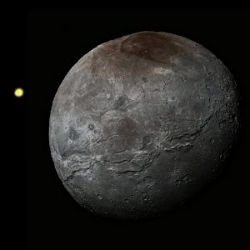
EarthSky.org
You might have heard that the Earth is the only planet in our solar system that experiences eclipses. That is not true. Granted, our eclipses are special, but hypothetical observers on other planets also could experience partial and total solar eclipses.
Read on to learn more about eclipses on other planets, and to learn why Earth’s eclipses are unique.
Venus and Mercury
Generally speaking, an eclipse occurs when one astronomical body (such as a moon) passes in front of another (such as our sun). Mercury and Venus, having no moons at all, never have eclipses of any kind.
Observers on the searing hot surface of Venus, would never directly experience an eclipse even if the planet had a moon, simply because it is constantly enveloped by thick clouds.
Mars
 |
| Martian moon Phobos passes in front of the sun as viewed by the Mars rover Curiosity on August 20, 2013. |
Transits occur when the nearer body appears too small to cover the farther body. During these events, the nearer body (for example, a moon of Mars) would appear through appropriately filtered, large-enough telescopes as black dots moving in front of the farther body (in this case, the sun).
A transit of a moon of Mars is essentially a partial eclipse. It can be geometrically equivalent to an annular solar eclipses seen on Earth. During an annular eclipse, the moon is in a far part of its orbit and appears too far from Earth to cover the sun completely, even when the moon passes directly in front of the sun.
The moons of Mars – Phobos and Deimos – are always too small and too far from the planet for anything but transits, or partial eclipses.
Jupiter, Saturn, Uranus, Neptune, Pluto
Elsewhere in the solar system, observers floating at cloud-top level on Jupiter, Saturn, Uranus or Neptune could experience eclipses by the various moons of those worlds. Even far-off Plutonians would, on quite rare occasions, see a moon pass in front of the sun from their distant dwarf world.
 |
| Simulation showing the approximate relative sizes of the sun with Pluto’s large moon Charon, as seen by an observer on the surface of Pluto. To a real observer, however, the sun would be dazzlingly bright, and Charon would show up silhouetted as a black disk. |
So if solar eclipses are not exclusive to Earth, why are they so special?
Not to stress the obvious, but there are human observers on Earth to view eclipses, something no other planet in our solar system can boast. Aside from that, the main reason is that the sun and moon appear roughly the same size in the sky, allowing particularly impressive total solar eclipses. During totality of a solar eclipse, the silhouette of the moon leaves a gaping “black hole” in the sky, surrounded by the ghostly glow of the sun’s outer atmosphere, the corona.
This fortuitous circumstance happens because although the moon’s diameter is about 400 times smaller than the sun’s, it also is about 400 times closer. That makes the sun and moon to appear roughly the same size in the sky, about a half-degree. If the moon were 10% closer, as it was about a billion years ago*, it would always appear appreciatively larger than the sun, and some of the magic of today’s total solar eclipses would be lost.
If the moon were 10% farther away, as it will be roughly a billion years in the future, it would appear too small to completely cover the sun’s disk, and we would never experience a total solar eclipse.
So while our eclipse experience on Earth today is virtually unrivaled anywhere in the solar system, it is simply a temporary coincidence.